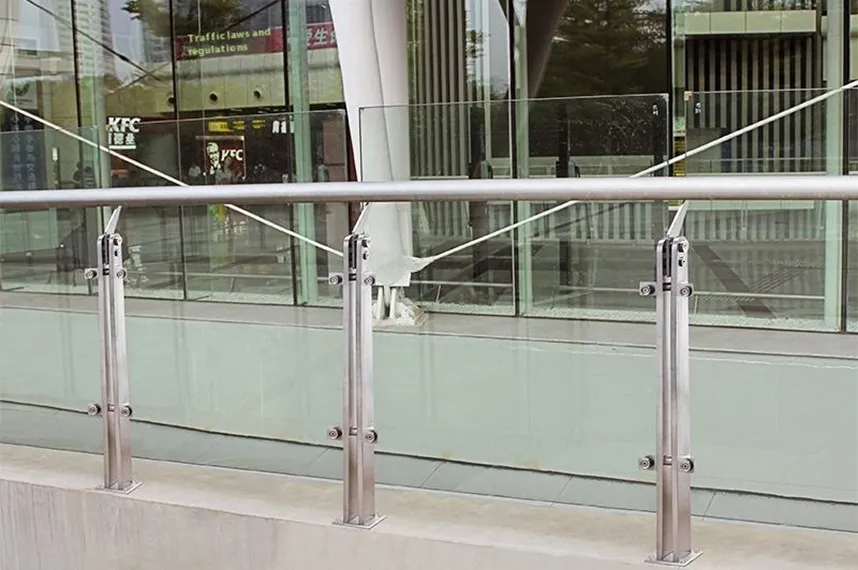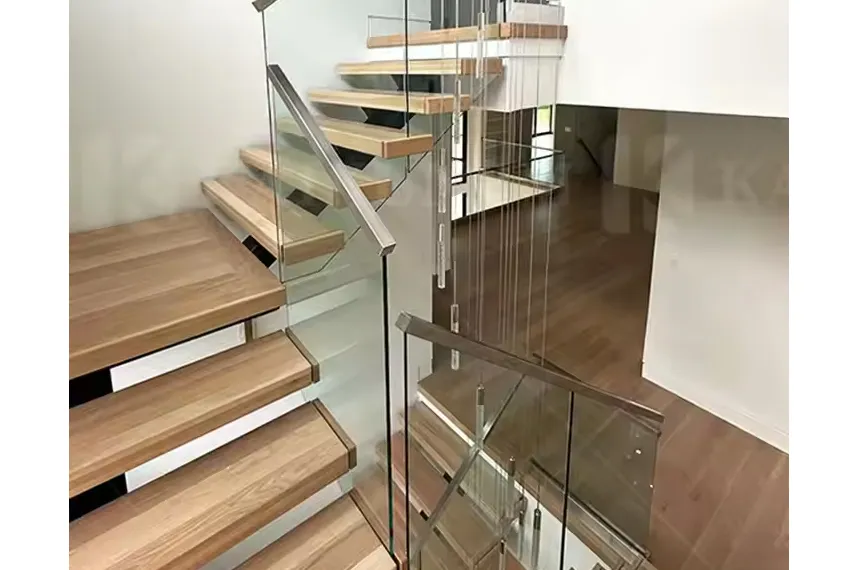You want a clean, modern look but you worry about safety and upkeep. Pick the wrong solution and you’ll lose views, spend more on maintenance, or fail building code. A well-specified balustrade en verre delivers clarity, safety, and lasting value—without the trade-offs.
Yes. A well-designed balustrade en verre is safe, code-compliant, and durable, and it boosts light flow and sightlines. Use tempered or laminated glass that meets guard requirements, specify quality hardware, and work with an experienced manufacturer to get a safe, quiet, low-maintenance system that adds value.
As a professional stainless steel manufacturer and exporter, Jiuguang Metal supplies engineered balustrade components and custom fabrication for trade buyers worldwide. Below, I’ll explain—clearly and practically—when and why a balustrade en verre is a smart choice, what thickness and makeups to specify, how to maintain it, and how to compare options. I’ll also fold in lessons from projects we’ve delivered for balcon edges, mezzanines, and escalier guards, so you can decide with confidence.
A balustrade en verre is a guard or barrier that uses a panneau de verre as the infill or structural element. In a typical garde-corps system, the glass is captured in a base shoe, post pince, or point-fix system and paired with a top main courante for load-sharing and comfort. The result is an dégagé edge that preserves views and improves attrait visuel.
Modern assemblies rely on verre trempé (often called verre trempé) or verre feuilleté avec un interlayer for redundancy. When sized and anchored correctly, these systems resist crowd loads and meet code de la construction guards’ impact and load criteria while looking seamless and bright throughout the space.
"Glass balustrades make spaces feel bigger without sacrificing safety, as long as the glass and fixings are specified to code.”

What exactly is a glass balustrade
Yes—if you specify the right glass makeup and hardware. Under modern exigences du code, glass used in guards must be safety glazing and, in many jurisdictions, laminé so that fragments adhere to the interlayer dans le event of breakage (instead of falling away). The permanent label or documentation must show the type and thickness to verify compliance.
Both are recognized as verre de sécurité when they meet the standard and thickness requirements for guards.
Absolutely. Clear architectural glass transmits a high percentage of daylight compared with opaque infills. Standard clear glass often shows visible light transmittance around ~83%, while low-iron “ultra-clear” products can reach ~90–91% or higher. That extra transmission can make interiors feel bright and airy and boost spaciousness.
Research also links lumière naturelle to comfort and well-being, which is one reason glass guards are a choix populaire in residential and commercial design.
Here are the top benefits of glass balustrades—in plain terms buyers care about:
Compared with a picket railing, glass reduces visual clutter and turns the edge into a focal point, especially in feature stairways or terraces. If you need more privacy, you can tint or frost select areas while keeping the rest crystal clear.
In short, when you use glass thoughtfully, you get an l'attrait esthétique that standard infills can’t match.
A sans cadre system sets the glass directly in a base channel or point fixings so the top remains clean. Many clients love the aspect moderne because it reads seamlessly with contemporary floors and facades. Others prefer a continuous top main courante for comfort and code assistance (some regions require it). Your choice depends on needs and preferences, wind exposure, and local rules.
Verre sans cadre edges offer a panoramic effect; capping rails add tactile comfort and extra strength for public or high-traffic uses. Jiuguang Metal fabricates both and can guide you through the trade-offs for intérieur et extérieur projets.

handrail-capped Railing Systems
Guard glass is thicker than shower doors or interior partitions. While 6mm glass is common in non-guard applications, balustrades typically require thicker lites and/or laminates—often 10–21.5 mm depending on span, fixings, and local rules. Many codes now expect laminé guard glazing (with tempered or laminated glass clearly documented), especially where no top rail is present.
Quick guide (illustrative, always verify locally):
| Application | Typical Makeup (example) | Why it’s chosen |
|---|---|---|
| Residential balcony | 5+5 or 6+6 verre feuilleté (heat strengthened or verre trempé) | Redundant layers; safer post-break behavior |
| Public mezzanine | 8+8 to 10+10 laminated | Higher loads and traffic |
| Staircase guard | Tempered + rail cap, or laminated frameless | Comfort and compliance with exigences du code |
(Always have an engineer or supplier confirm thickness and anchorage for your exact spans.)
With a coordinated kit and experienced contractor, it’s easy to install. You’ll level the base, set glass in the channel, plumb each panneau de verre, then grout or wedge. Posts with pince fittings are even faster to assemble in some retrofits. Jiuguang Metal supplies matched hardware so installing a glass guard is predictable for site crews—no guesswork, no hunting parts.
Conseil de pro : Install glass after heavy trades are done to reduce accidental scratches; protect edges during other works.
Maintenance is simple:
Unlike wood or painted steel, glass doesn’t fade, peel, or need repeated coatings—unlike wood, it stays clear with basic care. With routine cleaning, you’ll keep them looking their best for years. In cold climates, wipe winter frost and de-ice with non-corrosive products.
Typical maintenance effort (illustrative):
| Objet | Mensuel | Yearly |
|---|---|---|
| Wipe hand contact zones | 1–2 times | - |
| Full wash (exterior) | - | 2–4 times |
| Hardware check | - | 1 time |
You can dial visibility with frosted glass, low-iron, gray or bronze tint, or patterned laminates. Glass also blocks wind better than open infills, and top rails feel comfortable to lean on.
For safety, specify polished edges and certified glazing so if éclater occurs, fragments either crumble or adhere to the interlayer. Some projects add a small capping rail to keep a cracked lite in plane in the event of breakage.
Yes. Guards must meet impact and line load criteria. Today’s codes commonly require laminated safety glazing for guards, with permanent markings for identification; where a permanent mark isn’t possible on laminates, an inspector can accept a certificate tied to the install. Always verify local exigences du code before procurement.
Key takeaways from recognized guidance:
Clear guards open space and strengthen curb appeal. In many markets, buyers favor daylight and view continuity; paired with good planning, that can support increased property value and faster sales. Studies also link daylight to occupant satisfaction and wellness—small changes that add a touch of comfort and quality the market notices.
Use a balustrade to highlight a staircase as a showpiece or to “erase” barriers on a terrace; both tactics lift l'attrait esthétique and perceived size.

Will a glass balustrade raise resale and design value
Upfront material cost can be higher than basic pickets, but lifecycle cost is competitive: no repainting cycles, fewer corrosion risks, and fewer components to replace. Versus bois ou métal infills, glass keeps views and daylight while trimming long-term maintenance.
Comparison snapshot (illustrative):
| Fonctionnalité | Balustrade en verre | Picket railing |
|---|---|---|
| View continuity | Excellent | Interrupted |
| Nettoyage | Wipe & wash | Dusting + painting |
| Privacy options | Frosted glass, tint | Limitée |
| Perceived size | Haut spaciousness | Modéré |
| Lifecycle tasks | Light cleaning | Paint/repair cycles |
A small duplex wanted an interior glass railing to make the stair feel open and airy. We specified laminated low-iron to maximize the transparency of glass, with a slim top cap for comfort. The result: better light spread throughout the space, stairs that became a design feature, and a noticeable stunning visual impact from the entry.
Why it worked: few posts, continuous lites, smart lighting. The railing is generally invisible; the architecture takes center stage.
Before you install glass balustrades, confirm:
At Jiuguang Metal, we tailor shop drawings and cut-to-size components for contractors, OEM brands, and distributors. We help installing a glass guard go smoothly by shipping complete kits and providing test certificates on request.
| Type | What it is | Where it shines |
|---|---|---|
| Tempered | Heat-durcird monolithic glass; breaks into small crumbs | Impact resistance; heat near sun-bathed terraces |
| Laminated | Two or more lites with polymer interlayer; holds together if cracked | Residual barrier action; acoustic/privacy control |
| Low-iron | Extra-clear verre moderne with reduced green hue | Maximum clarity and color accuracy |
If you must choose one, a laminated build often gives you the best post-break behavior; a glass or tempered monolithic lite can be appropriate when paired with a continuous top rail—verify locally.
These tweaks let you tune privacy without losing the panoramic feel and attrait visuel that make glass so compelling.
That’s it. With minimal care, glass is easy to keep sharp in salt air, sun, or snow.
“If regular glass breaks, won’t it be dangerous?”
That’s why guards use certified verre de sécurité—not regular glass. Verre trempé crumbles; verre feuilleté holds together. Many jurisdictions require laminated for guards (especially without a top rail) to maintain a barrier in the event of breakage.
“Will it feel cold or too exposed?”
Use tinted or etched bands to warm the tone and soften views; combine with a comfortable top cap for touch.
“Will it scratch easily?”
Treat it like any finish: clean grit before wiping; protect during construction. Proper heat treatment and edge finishing support longevity.
Choose an alternative where: heavy impact risks exist, graffiti is a constant, or budgets can’t support engineered glass. In those cases, consider perforated metal or cable—accepting the trade-off in clarity compared with a garde-corps en verre.
Specified correctly, a balustrade en verre gives you safety, clarity, and lasting value. It turns barriers into light-sharing planes and helps spaces read larger and calmer. Done poorly, it’s a headache. Get the glass makeup, anchorage, and documents right—and partner with a manufacturer who lives this every day.
Do I need laminated glass or is tempered enough?
Both are recognized safety options, but many jurisdictions now prefer laminated for guards so cracked lites remain in place. Always check local rules and your engineer’s guidance.
Will a glass balustrade help with light and views?
Yes. Clear lites can pass ~83% VLT for standard clear and ~91% for low-iron, preserving daylight and view continuity. That’s a big reason designers choose glass for mezzanines and terraces.
How thick should the glass be on my balcony?
It depends on span, exposure, and fixing method. Residential guards commonly use laminated builds (for example, 6+6, 8+8, or similar). Your supplier should size and stamp the spec for your site.
How do I clean and maintain it?
Rinse first, then wipe with a neutral cleaner and soft cloth. Inspect anchors annually and avoid harsh abrasives. Most owners find upkeep simpler than painted infills.
Is it suitable for coastal or cold climates?
Yes, with marine-grade hardware and proper gasketing. In winter, clear frost using non-corrosive de-icers; in coastal zones, rinse salt from hardware per manufacturer guidance.
Can I combine privacy with clarity?
Yes. Use frosted glass bands, selective tint, or printed interlayers to balance privacy and brightness.
Whether you’re a distributor, contractor, OEM brand, or buying office, we can package a solution that suits your market and workload.
Les balustrades en verre sont-elles une bonne idée ? Le système ultime de garde-corps en verre pour balcons et escaliers
Fabricants de tubes en acier inoxydable : Explication des tubes sans soudure, en acier allié et en acier inoxydable
Tubes et tuyaux soudés en acier inoxydable : Inox 304, 321, diamètre extérieur/épaisseur de paroi et spécifications des tubes
Main courante en acier inoxydable:Main courante en acier inoxydable et idées de garde-corps pour votre escalier